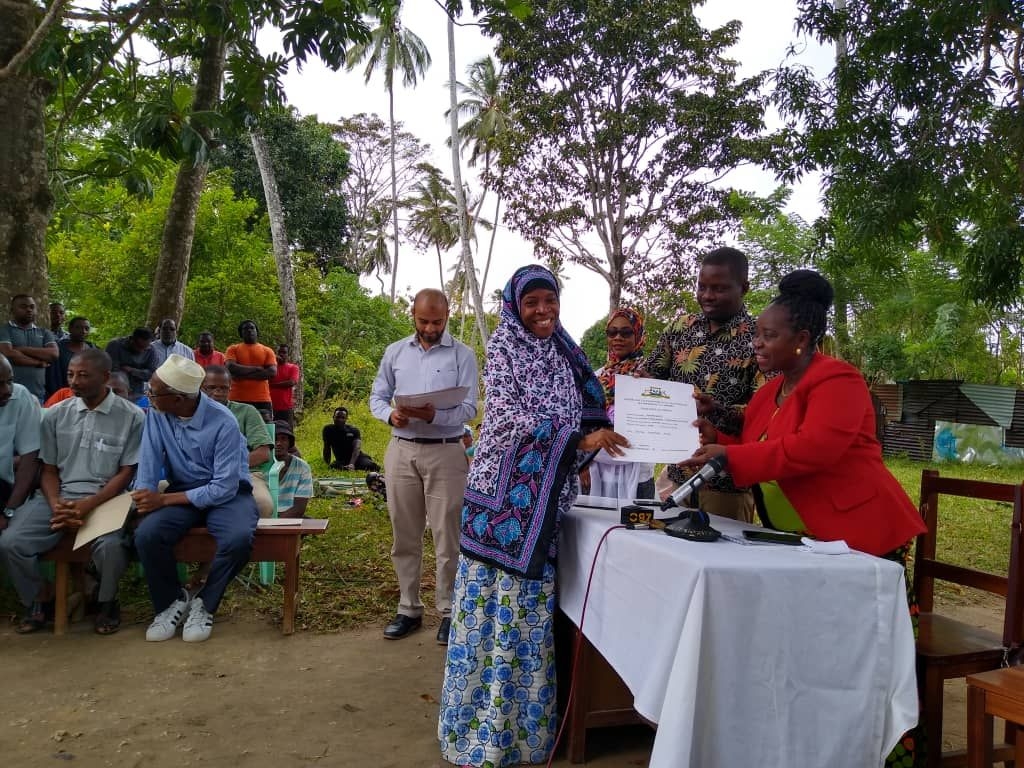This article was first published by the Thomson Reuters Foundation.
By Primož Kovačič, Co-founder and Managing Director of Spatial Collective
Like many dense urban areas throughout Africa, the population centres in Zanzibar - an autonomous region of Tanzania – are a tangle of asphalt, bricks and tin. It’s hard to tell where one property ends, and another begins, and the actual demarcation of residences has up to now remained largely informal.
Yet demand for land is increasing, and authorities have struggled to provide certificates of occupancy to its growing population.
Previous efforts to allocate property titles to owners of the roughly 500,000 structures identified in Zanzibar through drone mapping had failed, and the cost of employing an army of door-to-door surveyors with surveying equipment was too high and would take too long.
Traditional data collection and management methods, mostly paper-based and expensive, have not kept up with the demand for property ownership. Local authorities had determined that there were not enough surveyors and equipment for doorstep data collection, and the eventual issuance of certificates could take years, if it happened at all. The records indicating how many properties there are on the islands did not exist.
But a pilot project using drones and digital mapping is offering the archipelago a more efficient way to provide residents with land titles.

Back in 2017, the Zanzibar Mapping Initiative mapped the archipelago using drones. At the time, Nairobi-based tech firm Spatial Collective worked with Zanzibar’s Commission for Lands (COLA), and the State University of Zanzibar, to digitise all the buildings on the archipelago. More than 500,000 buildings were recorded digitally, making it possible for the first time to know the total number of built properties throughout the islands.
Based on this groundwork, Spatial Collective and COLA obtained a grant from a Cities Alliance programme supporting land tenure in African cities, to modernise the land adjudication process and help citizens acquire title deeds. By pairing tablets with drone imagery, Spatial Collective collected data on 900 properties.
The Zanzibar archipelago comprises several islands with urban areas that are sometimes so dense that the work of documenting every plot might take years. By contrast, new technologies are dramatically accelerating this process, and enabling the deployment of large numbers of enumerators.
To speed up data collection, Spatial Collective and COLA worked together to understand the process of adjudication, and suggest ways of removing bottlenecks. With the help of land tech platform Cadasta, Spatial Collective built a digital platform merging drone imagery with a redesigned adjudication form to collect data such as details on owners, boundary points, scans of relevant documents, and signatures.
Community members were trained to collect data themselves, reducing the collection time. COLA then prepared the certificates of occupancy to be approved by the Ministry of Lands, Energy, and Water. The process of issuing the certificates to the owners was also reduced, and 80 residents have already received their certificates.
One caveat is the accuracy of the data on the location of boundary points. The application used by the project did not match the system used by the government. By incorporating 7cm high-resolution drone imagery into the workflow, the issue could be fixed, and the data achieved good-enough accuracy, satisfying adjudication officers and communities alike.
For a time, COVID-19 temporarily interrupted the land titling process. Yet the local government chose to continue data collection despite the pandemic. COLA has since expressed interest in expanding the project while incorporating other digital strategies to help regularise land tenure for the entire island nation.
Disclaimer: The views expressed in this publication are those of the author and do not reflect the corporate policies or viewpoints of Cities Alliance Secretariat, its members, or UNOPS.

Primož Kovačič


